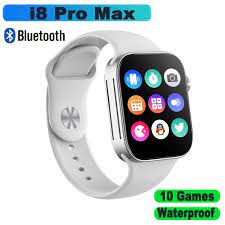
The smartwatch, a quintessential piece of wearable technology, has transitioned from a simple timekeeping device to a multifaceted lifestyle companion. With their origins dating back to the early 1980s, smartwatches have undergone a remarkable transformation over the decades. In this article, we will take a fascinating journey through the evolution of smartwatches, exploring how these once basic gadgets have become integral components of modern life.
The Early Days: Timekeeping and Beyond
The concept of a watch that could do more than tell the time has been around for quite some time. However, it wasn’t until the late 20th century that the vision began to take shape.
1. Seiko RC-1000 Wrist Computer (1984)
In 1984, Seiko introduced the RC-1000 Wrist Computer, a pioneer in the smartwatch domain. It was capable of storing and displaying appointments, contacts, and could even calculate data. While not exactly a consumer hit due to its high price and limited functionality, it laid the foundation for more advanced developments.
2. Casio Databank (1988)
Casio’s Databank watches, first introduced in 1988, were among the early forays into combining digital timekeeping with data storage. These watches featured a tiny keyboard and the ability to store phone numbers and memos, demonstrating the potential of merging technology with wristwatches.
The Turn of the Century: Early Smartwatch Concepts
As the 21st century approached, several companies began experimenting with more advanced smartwatch concepts. These watches aimed to do more than tell time and store basic data.
3. IBM WatchPad (2000)
IBM’s WatchPad, unveiled in 2000, featured a touch screen and ran a modified version of the Linux operating system. Although never released to the public, the WatchPad showcased the concept of a computer on your wrist, with features such as calendar, email, and web browsing.
4. Fossil Wrist PDA (2003)
Fossil’s Wrist PDA, released in 2003, featured a Palm OS-based organizer, a stylus for input, and even limited wireless capabilities. While still niche, it represented an early attempt to bring personal digital assistants to the wrist.
The Birth of Modern Smartwatches: The Smartphone Era
The true evolution of smartwatches began in earnest with the advent of smartphones and the increasing connectivity between mobile devices and wearables.
5. Sony Ericsson LiveView (2010)
Sony Ericsson’s LiveView, released in 2010, was designed to serve as an extension of Android smartphones. It could display notifications, control media playback, and provide access to apps. While rudimentary compared to today’s offerings, it marked the beginning of a new era in wrist-worn technology.
6. Pebble Smartwatch (2013)
The Pebble smartwatch, launched in 2013, was one of the first to gain widespread attention. It featured an e-paper display, a dedicated app store, and a strong emphasis on customizability. The Pebble laid the groundwork for what a modern smartwatch should be.
The Era of Apple Watch and Android Wear
The turning point in the evolution of smartwatches came with the introduction of the Apple Watch and the Android Wear (now Wear OS) platform.
7. Apple Watch (2015)
The Apple Watch, released in 2015, redefined the smartwatch landscape. It combined advanced health tracking, a variety of apps, and a sleek design that appealed to a wide range of users. With each new iteration, the Apple Watch has continued to push the boundaries of what a smartwatch can do, from monitoring heart health to offering cellular connectivity.
8. Wear OS (2014)
Wear OS, originally known as Android Wear, was Google’s foray into the smartwatch world. It brought a unified platform to various manufacturers, enabling a wide range of smartwatches to run on the Android operating system. Wear OS watches offered Google Assistant integration, app support, and customization options.
Modern Smartwatches: Features and Functions
Today’s smartwatches have come a long way from their humble beginnings. They serve a multitude of functions that go beyond mere timekeeping. Let’s explore some of the key features that have transformed smartwatches into lifestyle companions.
9. Health and Fitness Tracking
One of the most significant advancements in smartwatches is their role as health and fitness companions. They can track your heart rate, monitor your sleep, count your steps, and provide data on various exercises. Advanced smartwatches can even perform ECGs, detect falls, and alert you to irregular heart rhythms.
10. Communication and Notifications
Smartwatches enable users to stay connected without needing to reach for their smartphones. They can display notifications for calls, messages, emails, and social media. Some models even allow you to respond to messages directly from your wrist.
11. Navigation and GPS
Modern smartwatches often include GPS functionality, making them valuable tools for navigation, especially during outdoor activities. They can provide turn-by-turn directions, track your route, and calculate distances.
12. Mobile Payments
Many smartwatches support mobile payment solutions, allowing you to make purchases with a simple tap of your wrist. This feature adds convenience to your daily transactions.
13. Music Control and Streaming
Smartwatches can act as remote controls for your music, making it easy to change tracks, adjust volume, or even stream music directly to wireless headphones.
14. Customizable Watch Faces and Bands
Personalization is a significant part of the modern smartwatch experience. Users can choose from a variety of watch faces and easily swap out watch bands to match their style.
The Future of Smartwatches
As smartwatches continue to evolve, we can expect several exciting developments in the near future:
15. Enhanced Health and Medical Monitoring
Smartwatches are likely to become even more sophisticated in health monitoring, potentially including non-invasive blood glucose monitoring, blood pressure tracking, and more advanced sleep analysis.
16. Greater Autonomy
Battery life is a key concern for smartwatch users. Future advancements in battery technology could extend the time between charges, reducing the inconvenience of daily recharging.
17. Advanced Ecosystem Integration
Smartwatches are expected to play a more prominent role within tech ecosystems, seamlessly connecting with smartphones, smart home devices, and other wearables.
18. Wearable Computing
Smartwatches might evolve beyond being mere companions for smartphones. They could become independent computing devices, offering a more comprehensive app ecosystem and even AR (Augmented Reality) capabilities.
Conclusion
The evolution of smartwatches from basic timekeeping devices to multifunctional lifestyle companions is a testament to the remarkable progress of technology. From their humble beginnings as data-storing wristwatches in the 1980s to the advanced health-tracking, communication, and customization options available today, smartwatches have come a long way.
As we look to the future, smartwatches are poised to continue their journey of transformation. With enhanced health monitoring, improved autonomy, and deeper integration into our tech ecosystems, these



